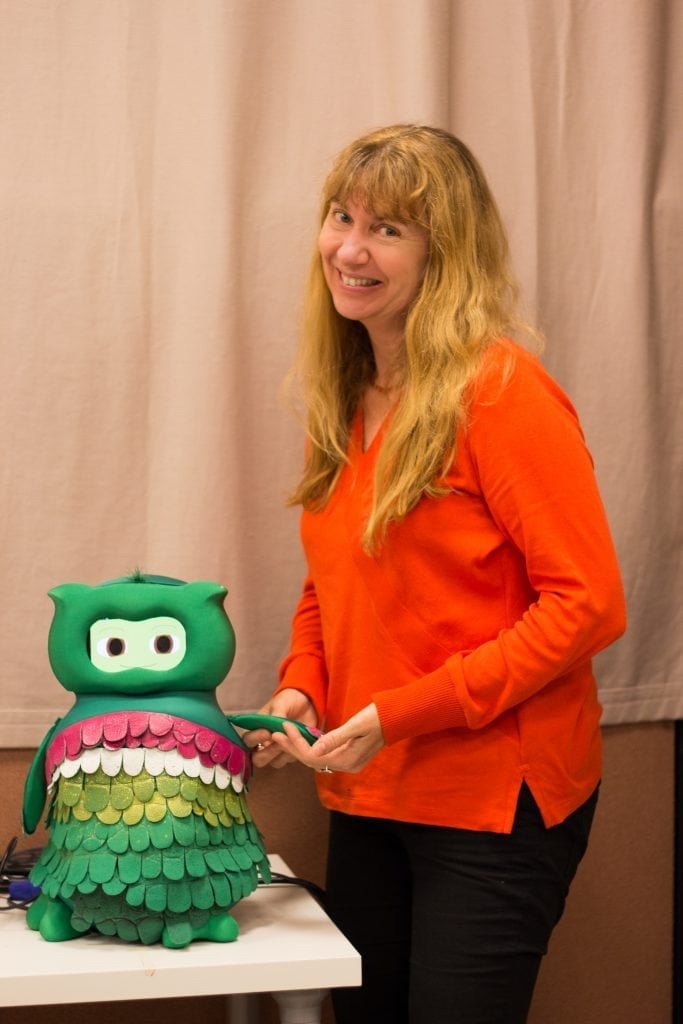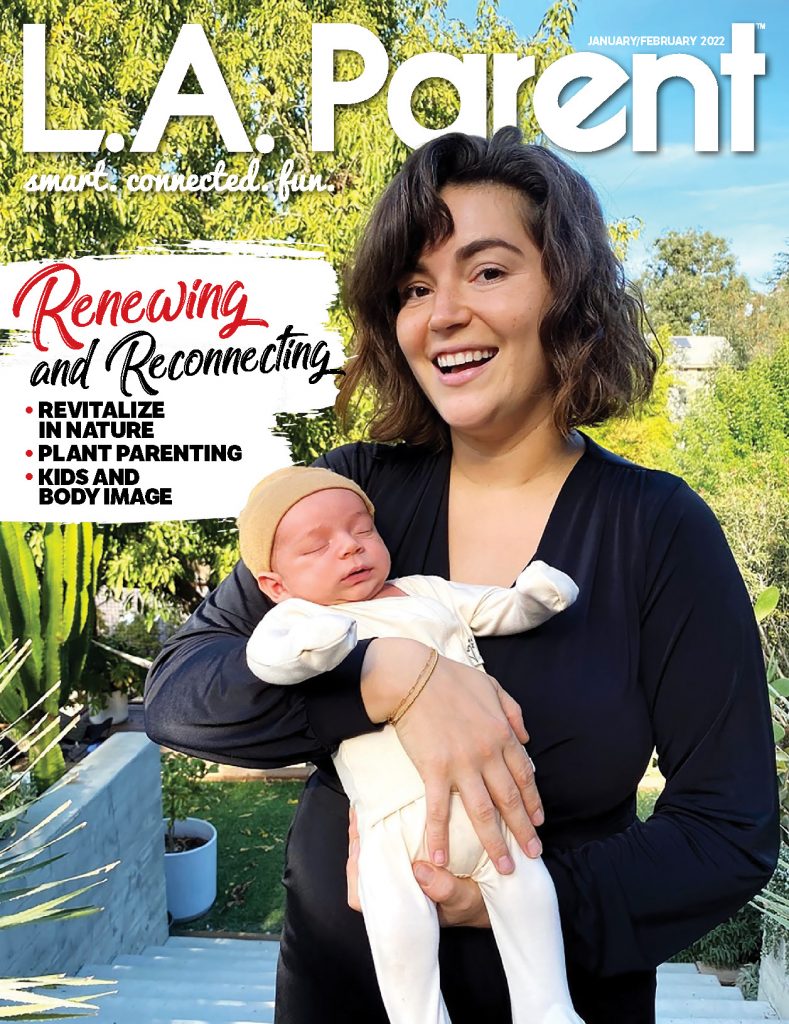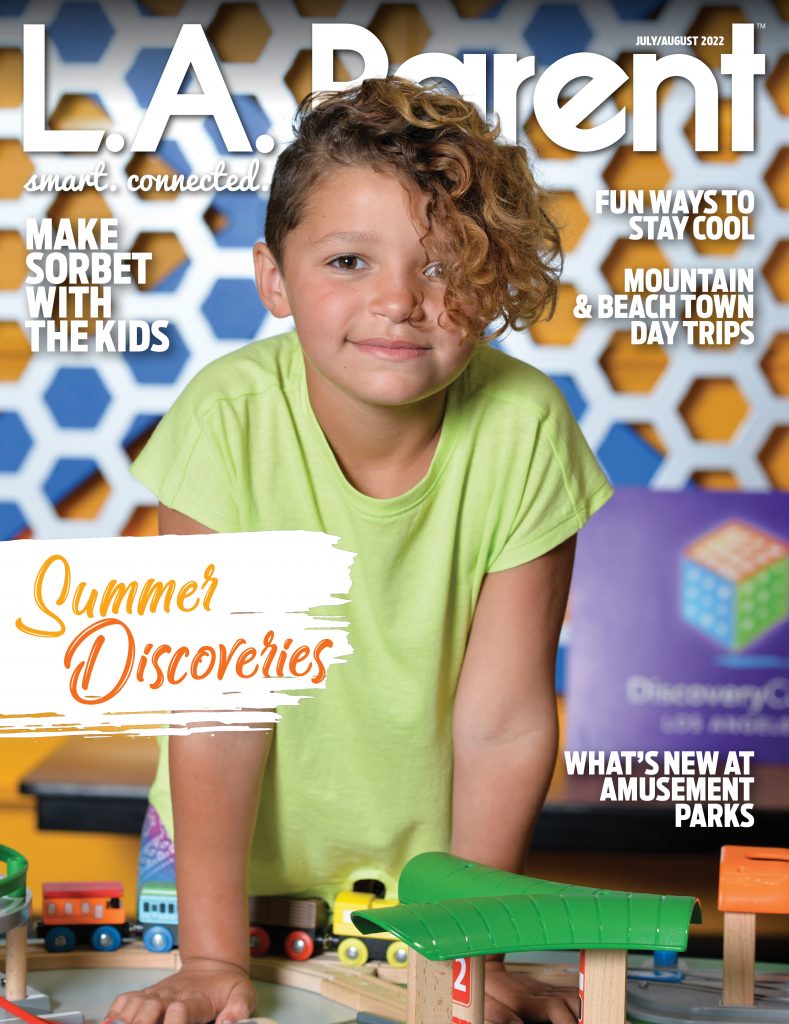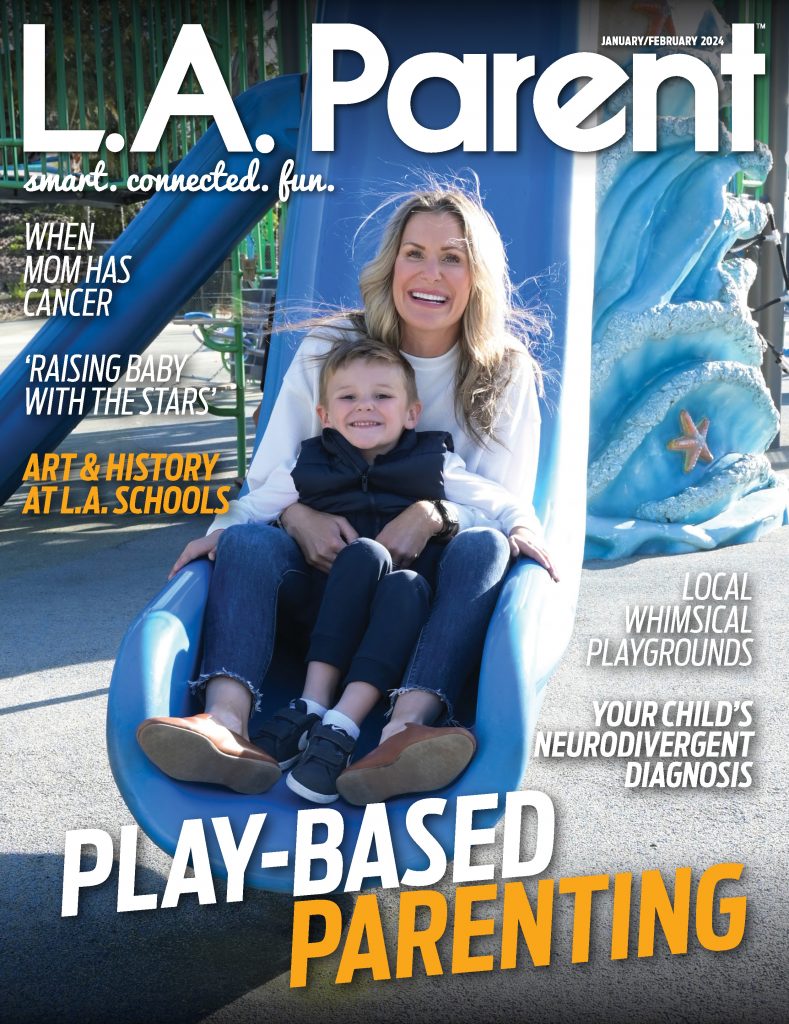
Maja Mataric, shown here with a robot created as part of her work at USC, has co-founded a startup company that is working to create assistive companion robots. PHOTO COURTESY MAJA MATARIC’
In a bright co-working space in a building in Old Pasadena are the offices of a startup robotics and AI company. The scientists, engineers, artists and designers there have added a unique feature to their product-development lab: a playroom. But they aren’t just playing. They are working to change the lives of children – including those with developmental disabilities –and they’re looking for families to help them.
The team developing this robot combines 14 years of research in socially assistive robotics from USC with 15 years of experience with consumer robotics from iRobot, and decades of animation and storytelling. And their newest venture is a lifelike, interactive robot that will serve as a motivator, coach and companion to help and empower children and their families.
The startup was co-founded by Maja Mataric’, Ph.D., who is also a professor of computer science, pediatrics and neuroscience at USC. Mataric’ coined the term “socially assistive robotics,” and has been working for decades to develop intelligent machines that use social interactions to help people with a variety of challenges – from dementia to brain injuries, stroke and autism.
Mataric’ and her team are keeping the name of their new company under wraps to avoid excess hype, but they recently invited me to the playroom to meet the new robot they are creating. It’s a charming little creature.
Imagine a helper that never gets tired or frustrated, that will sing the same song or play the same instructive game again and again – as often as the child wants. It will patiently coax, suggest, encourage, remind and respond, and can even send data to parents and therapists about the child’s progress. Best of all, to the child, this helper is a companion and friend.
While you’re thinking about it, imagine how your child would like this companion to look, speak, feel and play. Then think about joining the community of families Mataric’s company is building to help this helpful robot take shape. These families are invited to the lab so children can play with new prototypes of the robot and parents can test the parent interface, and will receive regular updates about the robot’s development and even – eventually – a chance to test the robot at home.
The end goal is to create, within a couple of years, an affordable and widely available assistive companion that a family could order online.
If you have a child between the ages of 3 and 12 and would like to help shape this brave new technology, click here to be added to the company’s mailing list.























